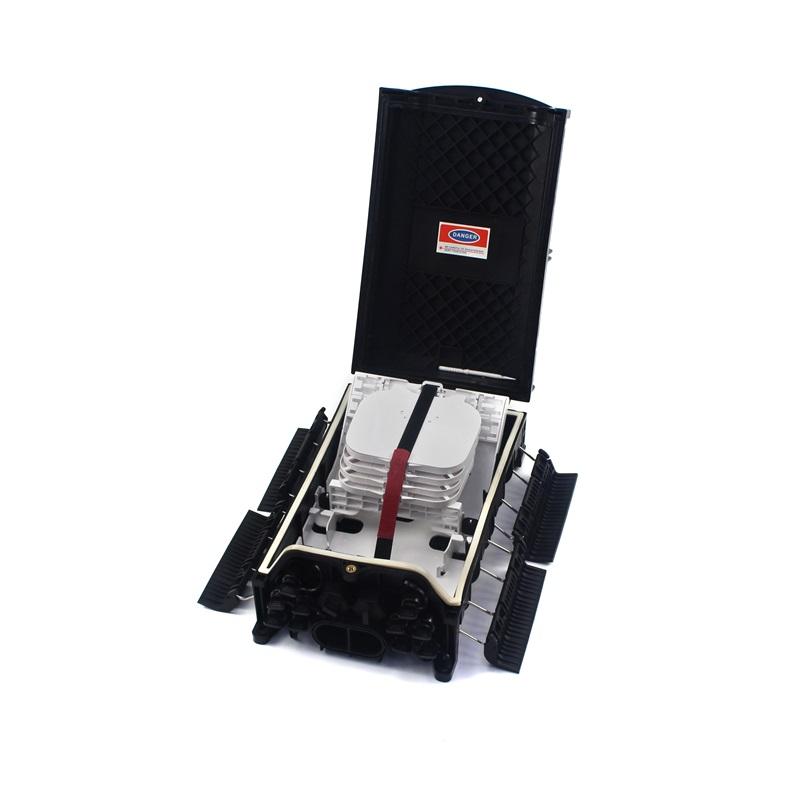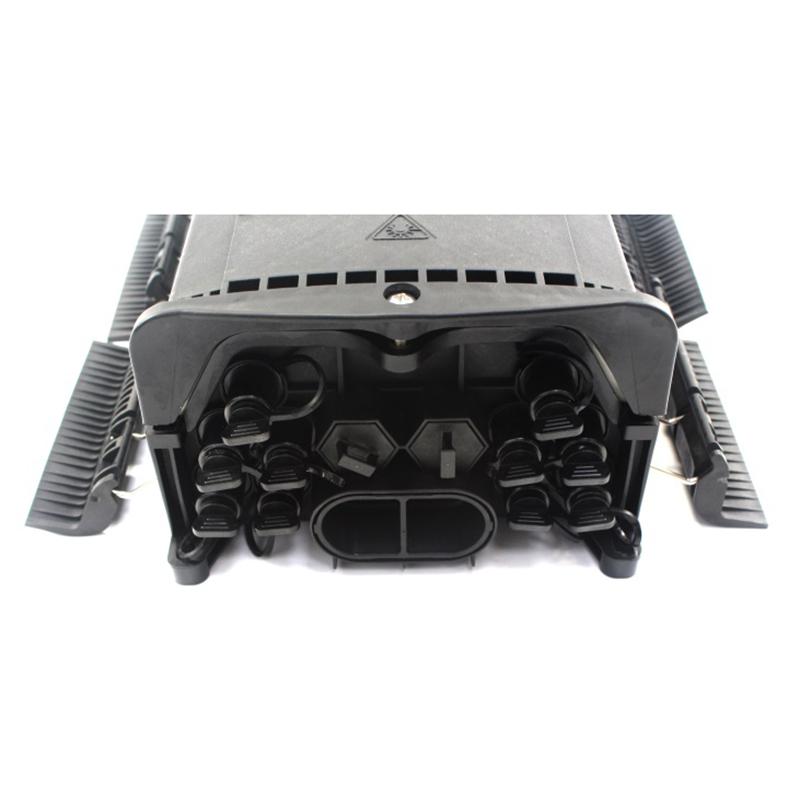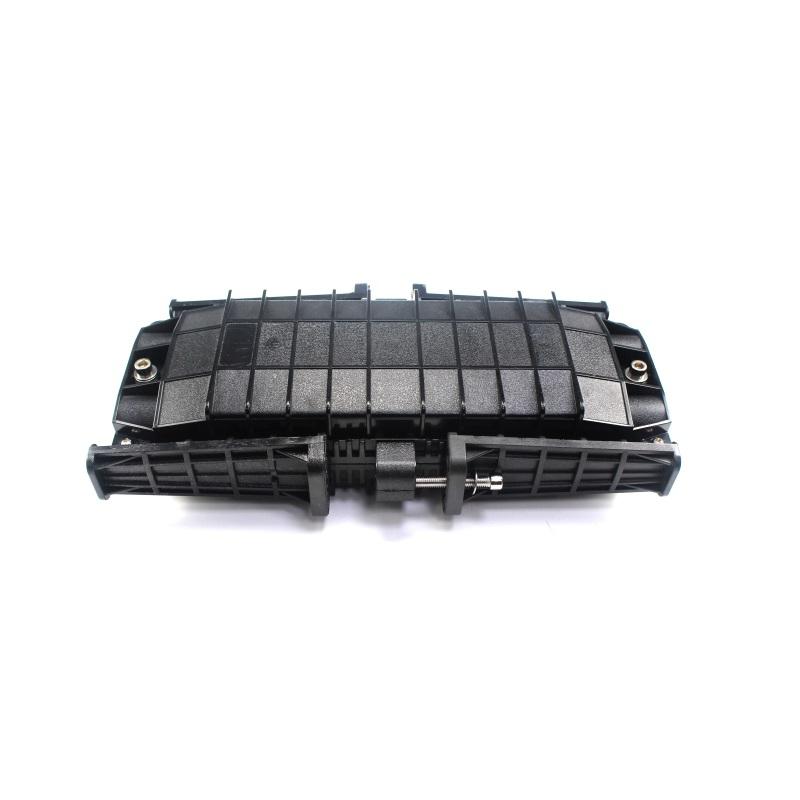
A Horizontal Splicing Box helps workers finish mine fiber installations quickly. Its strong build shields cables from underground hazards. Modular features let teams upgrade or access the network with ease. This design saves time and money.
Teams trust these boxes to boost network reliability and reduce costly repairs.
Key Takeaways
- Horizontal Splicing Boxes speed up mine fiber installations with plug-and-play design and easy cable management.
- They protect cables from dust, water, and physical damage using strong materials and tight seals, ensuring network reliability underground.
- Modular trays and flexible ports make upgrades and repairs simple, saving time and reducing maintenance costs.
Horizontal Splicing Box Features for Mining

Core Design Elements
A Horizontal Splicing Box brings together several smart features that make it perfect for mining. The table below shows the most important design elements and their benefits:
| Design Feature | Description |
|---|---|
| Sealing Method | Mechanically sealed, pre-connected for fast, plug-and-play installation |
| Installation Support | Works for underground, aerial, and ground setups |
| Explosion-proof Compliance | Meets strict safety standards for mining |
| Protection Level | IP68 rating keeps out dust and water |
| Material | Built from tough PP+GF for long-lasting use |
| Cable Port Sealing | Mechanical sealing keeps cables secure |
| Capacity | Handles up to 96 fibers with stackable trays |
| Flame Retardant Grade | FV2 grade for fire safety |
| Antistatic Property | Meets antistatic standards for safe operation |
| Digital Management | Supports AI image recognition for easy resource tracking |
| Installation Method | Wall-hanging design saves space |
| Appearance | Compact and neat look |
These features help teams install and manage fiber networks quickly and safely.
Protection Against Harsh Conditions
Mining environments are tough. Dust, water, and physical impacts can damage cables. The Horizontal Splicing Box stands strong against these hazards. Its IP68 protection level blocks dust and water. The shell, made from PP+GF, resists corrosion and keeps cables safe from moisture and dirt. The box also meets high impact resistance standards and uses anti-rust bolts. This design keeps fiber networks running, even in the harshest underground conditions.
| Environmental Hazard | Protective Feature |
|---|---|
| Dust | IP68 rating for complete dust resistance |
| Water ingress | Waterproof design with mechanical sealing |
| Physical impacts | High impact resistance and rugged shell |
| Corrosion | Stainless steel parts and anti-rust hardware |
Modular and Flexible Management
A Horizontal Splicing Box gives teams the flexibility they need. Its modular design includes removable and stackable trays for easy cable management. Multiple entry points let workers route cables from any direction. Adjustable guides protect the fiber’s bend radius. Moveable adapter holders and front access doors make upgrades and maintenance simple. The box supports both loose bundle and ribbon cables, so teams can expand or change the network as needed. This flexibility saves time and reduces labor costs.
Solving Mining Fiber Installation Challenges with Horizontal Splicing Box

Simplified Cable Management
Mining sites often face cable management problems that slow down projects and increase costs. Workers may struggle with tangled cables, duplicate installations, and poor documentation. These issues can lead to confusion and wasted time. A Horizontal Splicing Box helps teams organize cables in a compact space. Its modular trays keep fibers separated and easy to trace. Workers can route cables from different directions without creating clutter. The design prevents tangling and makes it simple to add or remove cables as needed.
Common cable management challenges in mining include:
- Lack of training, which leads to duplicate installations.
- Poor documentation, causing confusion and complex cable layouts.
- Neglected maintenance, resulting in cable clutter and troubleshooting problems.
- High component volume, making management difficult.
- Delayed responses due to underdeveloped personnel structure.
- Unnecessary spending from not removing outdated cables.
A Horizontal Splicing Box addresses these problems by providing a clear structure for cable organization. Teams can quickly identify and manage each fiber, reducing mistakes and saving time.
Easy Installation and Maintenance
Mining environments demand fast and reliable network setups. Workers often face obstacles like harsh terrain, limited space, and the need for quick repairs. The Horizontal Splicing Box offers a plug-and-play design that speeds up installation. Workers do not need special tools or advanced training. The box allows for quick insertion and secure sealing of cables outside the enclosure. This feature reduces installation time and lowers the risk of errors.
Maintenance becomes easier with modular trays and front access doors. Teams can reach any fiber without disturbing the rest of the system. The box supports both loose bundle and ribbon cables, making upgrades and changes simple. Workers can perform repairs or expansions without shutting down the entire network. This flexibility keeps mining operations running smoothly.
Enhanced Reliability and Safety
Underground mines present many risks to fiber networks. Dust, water, and physical impacts can damage cables and disrupt communication. The Horizontal Splicing Box protects fibers with a strong, sealed shell. Its IP68 rating blocks dust and water, while the tough material resists impacts and corrosion. The box meets strict safety standards, including explosion-proof and flame-retardant requirements.
These features help prevent common threats such as:
- Physical damage from excavation or heavy equipment.
- Theft or vandalism attempts.
- Environmental hazards like erosion or harsh terrain.
- Accidental damage from poor documentation of cable routes.
A Horizontal Splicing Box keeps fibers safe and stable. It reduces signal loss and network downtime. Teams can trust the box to maintain reliable connections, even in the toughest underground conditions.
Tip: Reliable fiber networks improve safety for everyone in the mine by supporting real-time communication and monitoring.
Real-World Mining Applications
Mining companies need solutions that work in real conditions. The Horizontal Splicing Box has proven itself in underground installations. Its compact design fits into tight spaces, and its high capacity supports large networks. Workers can install the box on walls or other surfaces, saving valuable floor space.
In practice, teams use the box to:
- Connect new sections of the mine quickly.
- Upgrade existing networks without major disruptions.
- Protect cables from water, dust, and physical damage.
- Simplify troubleshooting and repairs.
The Horizontal Splicing Box helps mining operations stay efficient and safe. It supports digital management, allowing teams to track resources and plan upgrades with confidence. By choosing this solution, mining companies reduce maintenance costs and improve network reliability.
A Horizontal Splicing Box solves tough fiber installation problems in mines. Teams work faster and safer with this solution. They see fewer repairs and lower costs. Choose this box for better network reliability and efficiency.
- Boost mine operations
- Cut maintenance expenses
FAQ
How does a horizontal splicing box speed up mine fiber installations?
Teams install cables faster with plug-and-play connections. The box reduces setup time and keeps projects on schedule. Workers finish jobs quickly and move to the next task.
What makes this splicing box reliable for harsh mining conditions?
The box uses a tough shell and strong seals. It blocks dust and water. Teams trust it to protect fibers and keep networks running in underground mines.
Can workers upgrade or expand the network easily?
Yes! The modular trays and flexible ports let teams add or change cables without hassle. Upgrades happen fast, saving time and cutting labor costs.
Post time: Aug-18-2025
